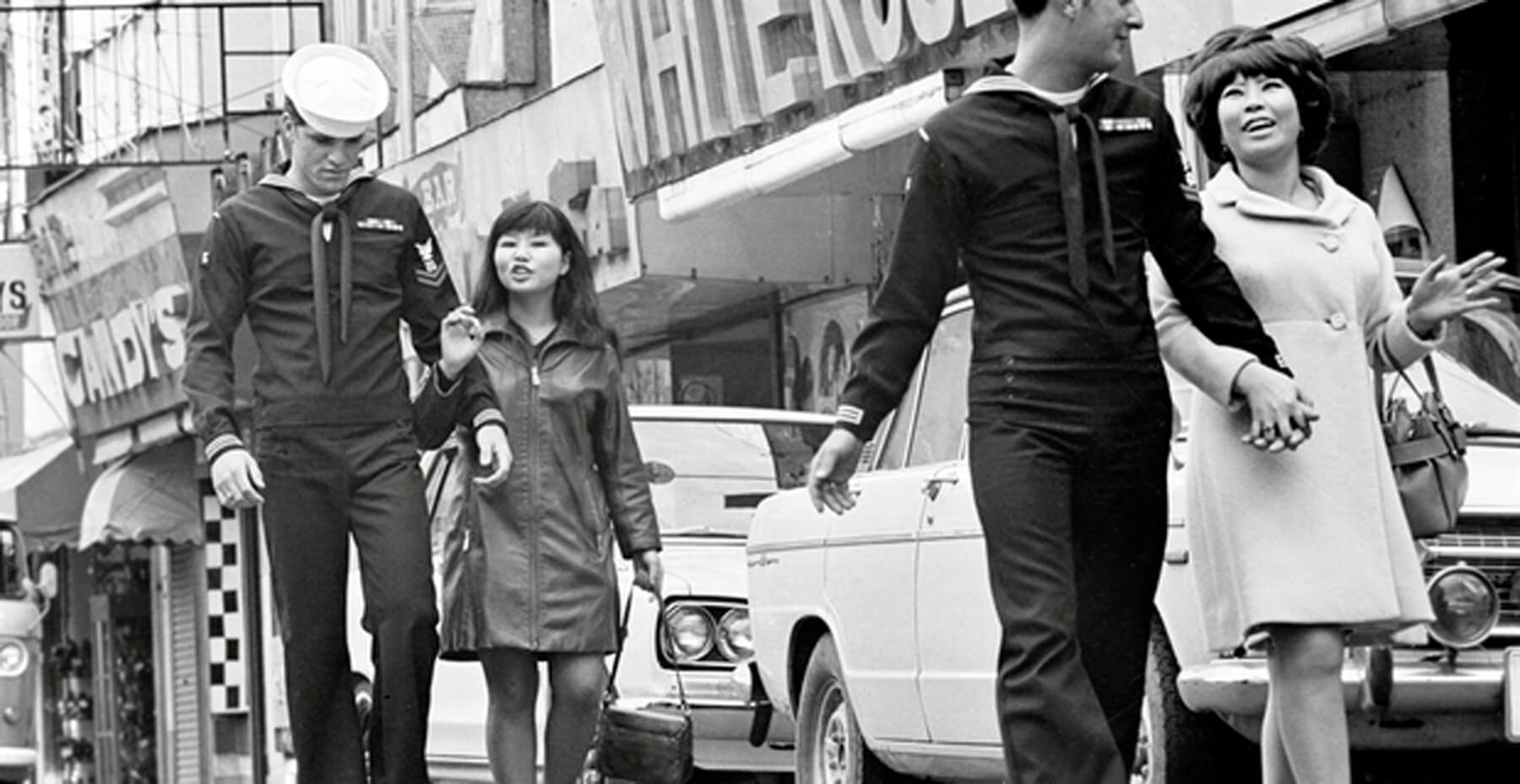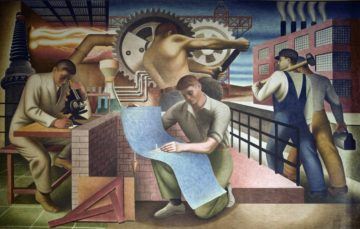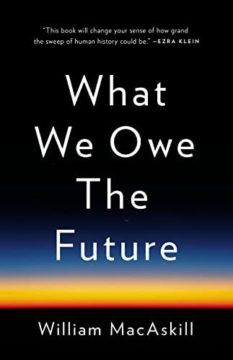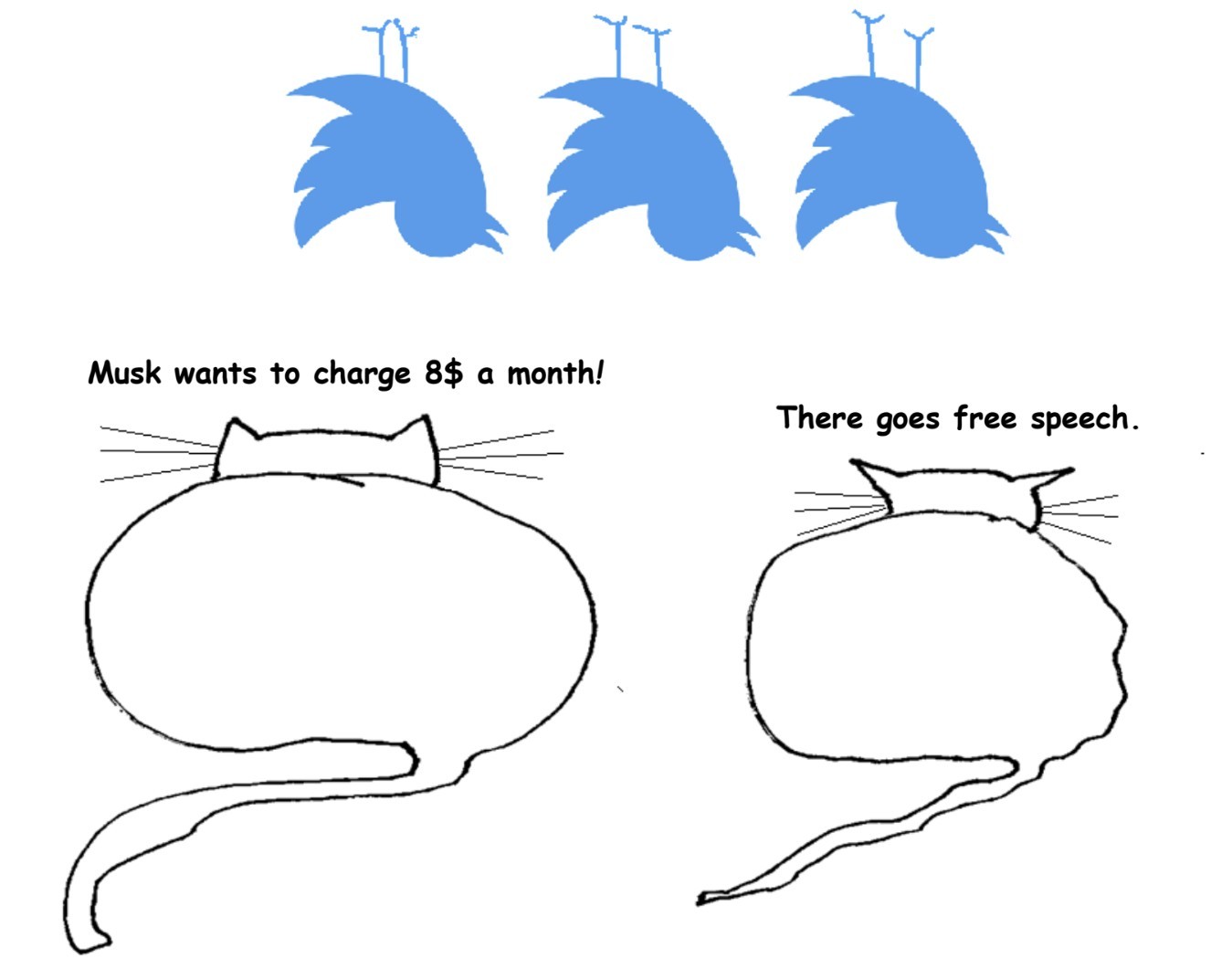Plose is the highest mountain in Brixen, South Tyrol. It is also a brand of popular mineral water here.
The Sublime Child in the Persona of Moses
by Shadab Zeest Hashmi
 First, because Moses, or the prophet Musa as we know him in the Quran, is an unusual hero— a newborn all on his own, swaddled and floating in a papyrus basket on the Nile— my brothers and I couldn’t get enough of his story as children. Second, it is also a story of siblings: his sister keeps an eye on him, walking along the river as the baby drifts in the reeds farther and farther away from home, his brother, the prophet Harun accompanies him through many crucial journeys later in life, another reason the story was relatable. Returning to the narration as a young woman, a mother, I found myself more interested in the heroines in the story: Musa’s birth-mother whose maternal instinct and faith are tested in a time of persecution, the Pharaoh’s wife Asiya who adopts the foundling as her own, confronting her megalomaniac husband’s ire and successfully raising a child of slaves and the prophesied contender to the pharaoh’s power under his own roof. As a diaspora writer, especially one wielding the colonizer’s tongue and negotiating the contradictory gifts of language, I have yet again been drawn to Musa. He is an outsider and an insider— one who carries a “knot on his tongue”— the burden of interpreting and speaking, not entirely out of choice, to radically different entities: God, the Pharaoh and his own people. Among the myriad facets of the legend, the most enduring is the innocence at the heart of his mythos, the exoteric quality of wisdom explored beautifully in mystic writings and poetry as a complementary aspect of the esoteric.
First, because Moses, or the prophet Musa as we know him in the Quran, is an unusual hero— a newborn all on his own, swaddled and floating in a papyrus basket on the Nile— my brothers and I couldn’t get enough of his story as children. Second, it is also a story of siblings: his sister keeps an eye on him, walking along the river as the baby drifts in the reeds farther and farther away from home, his brother, the prophet Harun accompanies him through many crucial journeys later in life, another reason the story was relatable. Returning to the narration as a young woman, a mother, I found myself more interested in the heroines in the story: Musa’s birth-mother whose maternal instinct and faith are tested in a time of persecution, the Pharaoh’s wife Asiya who adopts the foundling as her own, confronting her megalomaniac husband’s ire and successfully raising a child of slaves and the prophesied contender to the pharaoh’s power under his own roof. As a diaspora writer, especially one wielding the colonizer’s tongue and negotiating the contradictory gifts of language, I have yet again been drawn to Musa. He is an outsider and an insider— one who carries a “knot on his tongue”— the burden of interpreting and speaking, not entirely out of choice, to radically different entities: God, the Pharaoh and his own people. Among the myriad facets of the legend, the most enduring is the innocence at the heart of his mythos, the exoteric quality of wisdom explored beautifully in mystic writings and poetry as a complementary aspect of the esoteric.
The End of an Era: On Roger Federer’s Retirement
by Derek Neal
 The one regret of my life so far is never having seen Roger Federer play tennis in person. As Federer announced his retirement this year, I’ll never have the chance. The closest I came was the summer of 2017: I was in Italy and planned on flying to Stuttgart to see Federer play in a grass court tournament as preparation for Wimbledon. A few weeks before I was set to leave, I applied for a job at an English language school, largely at the behest of my girlfriend, who was unhappy with the fact that I was “studying” Italian in the mornings and flâning the streets in the afternoons, all while she spent long days toiling away as an unpaid intern in a law office, a common situation in Italy. I didn’t expect to get the job—I had little experience and no real credentials—but I would soon learn that neither of these things mattered, superseded as they were by my being a native speaker. I got the job and had to cancel my trip.
The one regret of my life so far is never having seen Roger Federer play tennis in person. As Federer announced his retirement this year, I’ll never have the chance. The closest I came was the summer of 2017: I was in Italy and planned on flying to Stuttgart to see Federer play in a grass court tournament as preparation for Wimbledon. A few weeks before I was set to leave, I applied for a job at an English language school, largely at the behest of my girlfriend, who was unhappy with the fact that I was “studying” Italian in the mornings and flâning the streets in the afternoons, all while she spent long days toiling away as an unpaid intern in a law office, a common situation in Italy. I didn’t expect to get the job—I had little experience and no real credentials—but I would soon learn that neither of these things mattered, superseded as they were by my being a native speaker. I got the job and had to cancel my trip.
For readers who are not fans of Federer, my above statement may seem hyperbolic, but I am writing in earnest. Sports, and specifically tennis, being an individual sport, have the ability to become representative of something larger than themselves. In tennis, the great players embody a way of life through their playing styles. Federer, being the most graceful and beautiful player, makes us think that one can live a life in this way, moving through the world in harmony with our surroundings, never forcing one’s desires but letting their fulfillment come to us, and acting in accordance with what might be called the laws of nature. This is how Federer moves around the tennis court. At his best, he seems to be a Zen sage who has attained enlightenment. Rafael Nadal is the foil to Federer’s grace. Nadal shows us that anything can be achieved through hard work and perseverance. He plays with force and power, grunting as he hits the ball, bending the world to his will and conquering all that lays before him. Fans of Nadal, I imagine, have this worldview and admire him for its representation in his style of play. Read more »
On the Road: Chile Can’t Decide
by Bill Murray

Charles Darwin was just shy of 24 years old, his eyes open in wonder as the HMS Beagle slid along the shore of the largest island in the archipelago of Tierra del Fuego. His eyes grew wider as bonfires flared along the water’s edge. “They must have lighted the fires immediately upon observing the vessel, but whether for the purpose of communicating the news or attracting our attention, we do not know,” he wrote.
These shore people called themselves Ona and Yaghan. Canoeists and fishermen adept at navigating the labyrinth of channels in these straits, in wintertime they kept fires constantly stoked for warmth. The Yaghan wore only the scantest clothing despite the cold. To fend off wind and the rain, they smeared seal fat over their bodies.
The Ona lived across the strait, on an island just visible through the spray and mist. History calls them fierce warriors who adorned themselves with necklaces of bone, shell and tendon, and who, wearing heavy furs and leather shoes, intimidated the bare-skinned Yaghan. Darwin gave them their backhanded due, calling them “wretched lords of this wretched land.” An acerbic settler once described life hereabouts as 65 unpleasant days per year complimented by 300 days of rain and storms. Read more »
Monday, November 7, 2022
The Puzzle of Working Class Politics Around the World
by Pranab Bardhan

The recent spectacular rise of extreme right-wing parties in Italy and Sweden and the squeaking narrow victory of Lula in Brazil have revived the puzzle that in the face of economic crisis and rising inequality the working classes are often turning politically right, instead of left. This is as prevalent in developing countries as in the rich countries of North America and Europe. One difference between the two sets of countries may be that while in rich countries this trend is markedly among less-educated, older, and more rural workers, in some developing countries, say India, this is also the case for more educated, aspirational, urban youth. The other difference between the two sets of countries is that working classes in developing countries are now in general more pro-globalization than in developed countries—more pro-globalization in Vietnam, Bangladesh, Nigeria and India, than say in France or US, as surveys of attitudes to globalization show.
But in both sets of countries large numbers of workers (and peasants), defying the usual pre-suppositions about inequality, have rallied under right-wing leaders who are often plutocrats, like Erdoğan, Orbán, Trump, Le Pen, or Nigel Farage (the original Brexit leader). In India the poor supporters of Modi do not care much that he is cozy with some of the richest Indian billionaire businessmen in the world. Workers are worried more about the rise in insecurity in their own lives, and do not seem to care much about the rising wealth of the top 1 percent. And this insecurity is not just about economic insecurity in terms of their jobs and incomes but also cultural insecurity of one kind or another, as I have illustrated in my recent book A World of Insecurity: Democratic Disenchantment in Rich and Poor Countries (Harvard University Press and Harper Collins India, 2022).
There is, however, an important difference between the US and other countries on right-wing attitude to economic insecurity. Read more »
Rule of Law
by Terese Svoboda
 “My account omitted many very serious incidents,” writes Bertrand Roehner, the French historiographer whose analysis on statistics about violence in post-war Japan I used in my Graywolf Nonfiction Prize memoir, Black Glasses Like Clark Kent. He began emailing me at this September about a six-volume, two thousand page report concerning Japanese casualties during the Occupation that has just been released in Japanese after sixty years of suppression.[i] Black Glasses Like Clark Kent is a memoir about my uncle, an MP in postwar Japan, that told of GIs executing GIs in an American-held Tokyo prison. Among many other things, the book takes a close look at censorship in postwar Japan.
“My account omitted many very serious incidents,” writes Bertrand Roehner, the French historiographer whose analysis on statistics about violence in post-war Japan I used in my Graywolf Nonfiction Prize memoir, Black Glasses Like Clark Kent. He began emailing me at this September about a six-volume, two thousand page report concerning Japanese casualties during the Occupation that has just been released in Japanese after sixty years of suppression.[i] Black Glasses Like Clark Kent is a memoir about my uncle, an MP in postwar Japan, that told of GIs executing GIs in an American-held Tokyo prison. Among many other things, the book takes a close look at censorship in postwar Japan.
A fog of censorship comes up during war about casualties. In the obfuscating haze after bombs explode – O Say Can You See? – bodies get thrown into too many pieces to count, bodies are attributed to those who don’t count, bodies simply aren’t counted. Authorities have their reasons to undercount. The mighty conqueror vanquishes the conquered by a mere flick of its thumb; the conquered want to seem relatively unscathed. If nothing else, undercounting encourages enlistment in future wars. Finding out just how many soldiers die in a war is extremely difficult. Counting the dead during an occupation with its even hazier rules is almost impossible. MacArthur made it even more difficult due to his overwhelming policy of censorship. “Even the Allied military reports were subject to self-censorship,” writes Roehner. In Black Glasses I was just trying to find out how many American soldiers convicted of capital transgressions had been officially executed by Americans. After four years of research, I did not discover that number. Counting civilians in either case is another thing entirely. According to the Geneva Convention, civilians are not supposed to be killed at all, although these days civilians are more and more the actual targets of conflict. (See Ukraine). Read more »
Past Glories, Dismal Present?
by Michael Liss
Never before in world history has a nation been so endowed with wealth and power, yet so plagued with doubt as to the proper use of that wealth and power.

Grim, right? Would you feel better or worse if I told you that came from written testimony given to Congress by Walter Reuther, then head of the United Autoworkers Union, in…1969.
It’s amazing how often “plagued with doubt” can be applied to something related to economics. Reuther was way ahead of his time. Not only did he advocate for workers’ rights, including the then-radical idea of profit-sharing, but also healthcare, civil rights, women’s rights, conservation, and education. He helped make Labor a player on key issues of his time, while surviving a couple of assassination attempts.
I mention Reuther because, a half-century after his death, those issues remain as pertinent, and as unresolved, as they did in 1969. They were also among the topics touched upon at the Center on Capitalism and Society’s 19th Annual Conference, titled “Present Failings and Ways Forward: Private Sector, Public Sector.”
The Center was formed in 2002 to study Capitalism’s strengths and weaknesses and to grapple with big issues facing it in a modern world. Founder (and 2006 Nobel Prize winner) Edmund Phelps has long envisioned and advocated for what he calls the “Good Economy,” which produces jobs that give meaning, confer personal dignity, and provide enough so that “Mass Flourishing” is possible. Productivity growth, innovation, and dynamism are all essential to that. The “Present Failings” part of the title of this year’s conference is reflective of the reality around us—an American economy showing a flabbiness, a loss of velocity, a failure to provide opportunity. In his remarks at the conference, Phelps himself acknowledged how far we have drifted from that goal.
The question is, why? What are we doing, or failing to do? Read more »
Monday Poem
Given current conditions on Terra Firma, just needed some space—
Fun in Space
Call me nomad.
Rootlessness is my routine.
From where I stand space
begs for exploration, not occupation
—occupation of space requires a
military state of mind, armies train for it,
but individuals grow dull and lethargic
just occupying space.
There’s no substitute for dynamism
when facing space. Moving through
is the best way to get the feel of it,
the rush of time through your hair.
When I stumble upon a new chunk
I like to engage it many times over,
laying out alternate trajectories,
bisecting circles, flying off on tangents,
or just nosing around looking for shortcuts.
If the wind’s right you might catch me
boogalooing along a hypotenuse or,
oscillating between the foci of an ellipse,
I go at it from all angles by any means.
For instance, I’ve found a trampoline’s
a great way to explore space:
up, down, up, down.
Along similar lines (if you have the bucks)
a space shuttle’s good too:
up, down, up, down.
There are various ways to approach space.
We can grid it off and tackle it one little block at a time,
or go at it whole, working it as Jackson Pollock would a canvas
—our choice depends upon our depth of indoctrination, or
personality disorder.
Whatever our milieu,
space can be an exhilarating place —or is it places?
—whatever.
In fact, space is full of surprises,
moving beyond bland Euclidean space
that is (the plainest of all geometries);
—still, you gotta hand it to the guy,
Euclid’s space may be old hat,
but it’s a space that’s served us well over the years.
Try getting from here to there without it.
But what really psyches me
are novel topologies of space.
There’s nothing more exhilarating
then space that pushes the envelope.
Consider the tasty appeal of a torus,
the deep-fried cuisine of cops, AKA “donut,”
or the intriguing infinity of a Möbius strip,
or the warm and cozy feel of a
conversation-laced pub. These are
boundary-pushing spaces all,
but they’re nothing up against the
reality-bending possibilities of warped space
as given by Einstein, or the mystically tangled
theory of strings! Just the thought of Einsteinian space
trumps any sense of metaphysical claustrophobia
left over from grade-school catechism under hard nuns.
But now?
Now I never miss the chance to savor space;
with eight billion of us on the planet,
at our present rate of consumption,
you never know when you might run out.
Jim Culleny © 2007
Election Day?
by Akim Reinhardt
 I like to vote in person on Election Day. I’m sentimental that way. My polling precinct is at the local elementary school. So last Tuesday, I woke up early, dressed and got out the door in a rush, and arrived to find not the expected pastiche of cardboard candidate signs and nagging pamphleteers, but rather a playground full of 2nd graders.
I like to vote in person on Election Day. I’m sentimental that way. My polling precinct is at the local elementary school. So last Tuesday, I woke up early, dressed and got out the door in a rush, and arrived to find not the expected pastiche of cardboard candidate signs and nagging pamphleteers, but rather a playground full of 2nd graders.
The first Tuesday in November? Apparently not, according to 2 U.S. Code § 7, which names Election Day as the first Tuesday “after the 1st Monday in November.” So much for making it simple.
So I waved at the children, but not in that creepy way, I think, and trundled off to work. Instead, I will vote tomorrow.
My aborted first attempt at voting in the 2022 U.S. election feels fitting. Nothing sums up this political moment quite so perfectly as trying to cast a ballot and failing. But mostly the whole episode reminded me of the four years I spent visiting prison. The rigid enforcement of arbitrary time. A yard full of people being held against their will and watched over by a small, shockingly underpaid staff. And a strong sense that it’s do or die time. Read more »
Climate change and creationism – ten days in October
by Paul Braterman

New Zealand is taking measures to reduce the amount of methane and nitrous oxide generated by the flatulence and urinations of its vast flocks of sheep and cattle. No joke; molecule for molecule, methane is about 80 times as effective a greenhouse gas as carbon dioxide, while nitrous oxide (laughing gas, an anaesthetic and euphoric) is 300 times as effective.
Such action, according to Ken Ham in Answers in Genesis on 17 October, is not a good idea. As always, the AiG arguments are a hodgepodge of standard denialist pseudoscience, repeatedly rebutted but endlessly recycled, to which I will return at the end of this article, together with a top dressing of biblical references forced into a libertarian straitjacket and mislabelled as religious, leading up to the final conclusion that action on greenhouse gas emissions is misdirected because
“The real problem facing New Zealand and the rest of the world isn’t an emissions problem—it’s our sin problem.”
On a whim, I decided to test this appraisal by collecting just those articles regarding climate change that happened to pop up in my newsfeeds, in the ten days immediately following AiG’s article, and the results are given below. Spoiler: emissions are repeatedly mentioned, but our sin problem is mysteriously absent. Read more »
The expected value of longtermism
by Jeroen Bouterse
 I’m not sold on longtermism myself, but its proponents sure have my sympathy for the eagerness with which its opponents mine their arguments for repugnant conclusions. The basic idea, that we ought to do more for the benefit of future lives than we are doing now, is often seen as either ridiculous or dangerous.
I’m not sold on longtermism myself, but its proponents sure have my sympathy for the eagerness with which its opponents mine their arguments for repugnant conclusions. The basic idea, that we ought to do more for the benefit of future lives than we are doing now, is often seen as either ridiculous or dangerous.
Usually, this takes the form of thought-experiments in which longtermists are supposed to accept major harm to humanity now in the hope of some huge potential benefit later. Physicist and YouTuber Sabine Hossenfelder, after boasting that she couldn’t be bothered to read William MacAskill’s book What We Owe the Future (“because if the future thinks I owe it, I’ll wait until it sends an invoice”), goes on to interpret a paper by MacAskill and his colleague Hilary Greaves in this way: “a few million deaths are acceptable, so long as we don’t go extinct.”[1] Phil Torres takes aim at an updated version of the same paper, in which Greaves and MacAskill argue that possible futures with huge numbers of people, even if they are unlikely, represent an expected value that outweighs that of the near future. He reads it as implying that MacAskill and Greaves might well press a button that lets 1 million people die now, to increase the chance that 100 trillion people will be born later.
That does sound inhumane, though luckily it seems unlikely that these two Oxford professors would get their hands on such a button, and that they would have a sufficiently strong credence in its reliability. Even aside from that, however, I have learned to stop worrying about what longtermists would do when presented with mega-trolley problems: every time some hostile rendition of a longtermist argument has shocked me into checking out the source, the original text turned out to be orders of magnitude less scary than I was led to believe. If you want to make the case that MacAskill and Greaves would support mass slaughter now for a tiny chance to benefit the future, you have to be willing to stretch specific parts of their argument and ignore the part where they, for instance, explicitly factor in a no-harm criterion (p. 5; p. 30). The idea that longtermist thinkers are making the world safe for cold-hearted utilitarianism, in which faraway ends justify any means, only gets off the ground if you are willing to believe that they are dishonest about where their arguments are taking them. Read more »
Perceptions
 Sughra Raza. Valparaiso Expressions. Chile, November 2017.
Sughra Raza. Valparaiso Expressions. Chile, November 2017.
Digital photograph.
The Empress’s New Clothes
by Rafaël Newman

Last month, after a three-year hiatus imposed by the pandemic, I was again able to participate in a once regular study-abroad junket, assisting a professor at the Swiss university where I serve as adjunct. The professor, to whom I happen to be married, was leading a group of 22 students on so-called Academic Travel, our university’s bi-annual USP: a ten-day sojourn in a country relevant to the topic of a course conducted otherwise in regular classes on the university’s campus in Lugano. The last time I went along on one of these trips, in 2019, the topic was commemoration of the Holocaust, and our destination was Poland, including the Auschwitz memorial site and the Jewish Cemetery in Łódź. This time, during the 2022 fall semester, the course was entitled “Writing and Re-Writing the Classics”; the primary texts were by Homer and Aeschylus and their respective modern interpreters; and we were bound for Greece.
Academic Travel traditionally follows midterms, so by the time we arrived in Athens the students had already read and discussed the Odyssey, in a new translation by Emily Wilson, as well as Circe (2018), Madeline Miller’s Stoppard-esque, “novelized” revision from the POV of a minor character. The syllabus called for them to turn now to the Oresteia, Aeschylus’s three-play account of the curse on the house of Atreus and our only extant tragic trilogy. On return to regular classes in Lugano in November, the class would then begin reading and discussing House of Names (2017), Colm Tóibín’s polyphonic re-writing of the tragedy, and consider the Irish author’s reframing of the ancient myth with a modern sensibility, his contemporary take on the psychological and, indeed, legal matters at stake in Aeschylus’s drama. Read more »
Back to Basics: Planetary Palliative Care
by Marie Snyder
 Climate change and covid are revealing an ongoing inability for our society to make wise decisions in the face of calamity, which may be leading us to a collapse of our civilization. Perhaps if we accept (or just believe) that we’re nearing the end, we can shift our priorities enough to usher in a more peaceful and equitable denouement.
Climate change and covid are revealing an ongoing inability for our society to make wise decisions in the face of calamity, which may be leading us to a collapse of our civilization. Perhaps if we accept (or just believe) that we’re nearing the end, we can shift our priorities enough to usher in a more peaceful and equitable denouement.Some recent climate change articles are painting a bleak picture. At the Paris Agreement in 2015, countries around the world signed on to reduce greenhouse gases (GHGs) in order to cap warming at 1.5°C above pre-industrial levels by 2030. It’s become clear that we won’t be able to make it.
Current pledges for action by 2030, if delivered in full, would mean a rise in global heating of about 2.5°C and catastrophic extreme weather around the world. . . . Global emissions must fall by almost 50% by that date to keep the 1.5°C target alive. . . . We had our chance to make incremental changes, but that time is over.
The climate crisis has been a test of our ability to put long term collective needs over individual desires, and we failed miserably. It’s no wonder we’re not sufficiently mitigating SARS-CoV-2. Despite all our knowledge and technology and ability, we just don’t want to be inconvenienced. This attitude dates at least as far back as Plato’s Protagoras, as Socrates argues that “our salvation would lie in the art of measurement,” specifically the ability to measure long term benefits against short term when measuring pleasures and pains. It appears that no amount of ingenuity can foist us out of our short-sightedness. We’re horrible at measuring current pleasures against distant pains, but even if we could, we also enjoy doing wrong too much for knowledge alone to lead us down the right path. Thousands of years after it was explained in writing, we still value unfettered lives that lead to unspeakable tragedies over some measure of restraint in current inconveniences could lead to greater pleasures later. Read more »
Catspeak
by Brooks Riley

The future of innovation
by Sarah Firisen
 For a long time, an accepted principle of corporate life has been that to take advantage of spontaneous ideation to drive innovation, people need to be in the same physical space. To encourage innovation, Apple, the accepted exemplar of an innovative company, built its headquarters in such a way as to try to spark these innovative interactions; “It’s hoped that by housing so many employees in one facility, workers will be more likely to build relationships with those outside of their team, share ideas with co-workers with different specialties and learn about opportunities to collaborate.”
For a long time, an accepted principle of corporate life has been that to take advantage of spontaneous ideation to drive innovation, people need to be in the same physical space. To encourage innovation, Apple, the accepted exemplar of an innovative company, built its headquarters in such a way as to try to spark these innovative interactions; “It’s hoped that by housing so many employees in one facility, workers will be more likely to build relationships with those outside of their team, share ideas with co-workers with different specialties and learn about opportunities to collaborate.”
Another principle, as this McKinsey piece claims, is that “Innovation is a team sport….when it comes to innovation, it is rare to see individuals who possess the full range of skills needed to lead an initiative.” And, at least until March 2020, the assumption was that the only successful way to collaborate creatively was in person. The brainstorming workshop, or team whiteboarding off-site, was something that most of us in white-collar jobs have been part of in some form or at some time.
At this point, it’s not news that many, maybe even most, of the white-collar workers who have been able to work remotely throughout the pandemic don’t want to return to the office. I’ve written about the, perhaps surprising, results of the unforeseen work-from-home mass experiment: productivity and worker satisfaction are up. And while some companies, particularly financial institutions, are starting to demand that people come in for at least 2-3 days a week, other companies are beginning to accept the reality that they may never be able to force everyone to be in the office regularly. Read more »
Realities that Emerge Through the Evolution of the Experiential Realm
by Andrew Bard Schmookler
Our contemporary secular worldview, though filled with knowledge and insights, is inadequately developed. It fails to provide the means for comprehending some important realities that religious perspectives — from which the secular culture has departed — were able, in their way, to provide.
It is not surprising that the secular worldview would have some such deficiencies.
- For one thing, it is of relatively recent origin: religious traditions had millennia to develop their systems to provide people the means to understand and cope with the various realities that human life and history compel people to deal with.
- For another, the religious traditions operated with an epistemology that enabled people to “make stuff up,” drawing on a mythological imagination, whereas the predominant epistemology of the secular worldview – to arrive at truth through applying reason to evidence – is far more constraining.
Which just means that there’s more work to be done by us who give our allegiance to that approach to the truth: we need to develop our secular worldview further so that it provides us with more of the understandings that are required to deal with the realities of the human world. Read more »
Monday Photo
My friend Ruchira Paul showed me a little trick to cook blue rice using tea made from the dried flowers of Blue Butterfly Pea plants. Shown here: a small appetizer plate with some greens, the blue rice (which smells and tastes like normal basmati rice), masoor daal (lentils), and some cheese and tomatoes.
Dance to the Music: the Kids Owned the Day

Here’s the scene: A middle school auditorium in suburban New Jersey early in the Fall. It’s late Saturday afternoon on the second day of a dance competition. The auditorium is filled—but only loosely—with young dancers and their parents, other family, and friends. They’re all waiting for the final performance of the competition.
Some hip hop comes up on the sound system and a few of the dancers begin moving to the music. Some of them are standing up from their positions in the audience and are dancing in place. A couple others, at the far-left and far-right down front, are dancing in the outside aisles. More start joining in.
Down front, in the center, the action photographer—the guy who’s there to shoot photos of each dance number so they can then be sold to parents—is sitting down front on his high swivel chair. He’s smiling, swiveling in the chair to survey the scene, and he starts clapping on the back-beat.
That’s me.
Now another hip hop number comes up and, in a whooshhh! dancers get up out of their seats, rush to the aisles, and the aisles are jammed with kids joyously dancing. Five, six, eight, eleven, fifteen years old, a few older. Even the dancers waiting in the wings on stage for the final number, they danced too.
All dancing. 100, 200, maybe more. Dancing.
It was wonderful. Read more »
Kesey was right, our generation’s “gone bad”
by Jim Britell

The roots of the epic transfer of wealth from the middle and lower classes to the rich which began with Reagan and peaked with the recent billionaire explosion can be traced to a series of events between March and November 1968.
July 1967 – Thousands converge in San Francisco for the Summer of Love
March 1968 – Robert Kennedy enters the Democratic Primary for President
April 1968 – Martin Luther King assassinated
June 1968 – Robert Kennedy assassinated
August 1968 – 75 million watch 5000 protesters clubbed and beaten on national television at the democratic convention in Chicago
January 1969 – Nixon sworn in as president
August 1969 – Woodstock
These events estranged a whole generation of young people who concluded that working within the political process was definitely not hip. They abandoned the political process. Many radicals, progressives, liberals and populists have avoided “hands on” electoral politics ever since. Read more »


